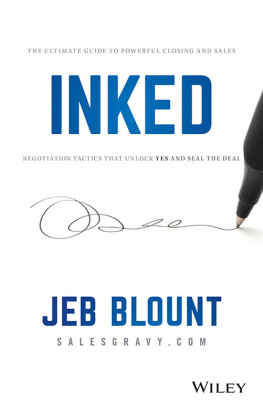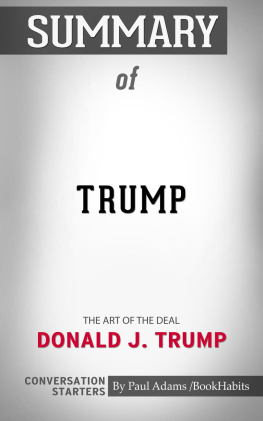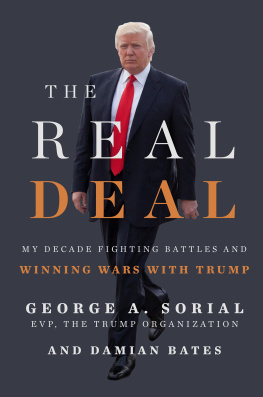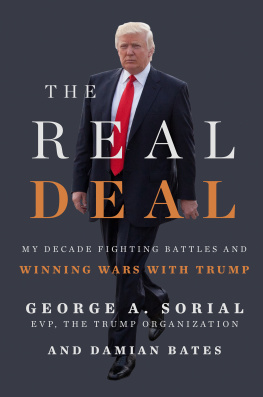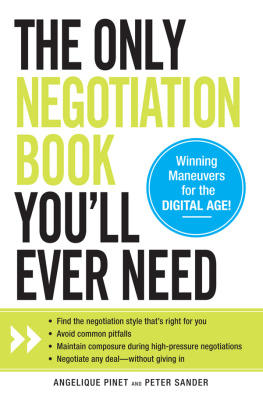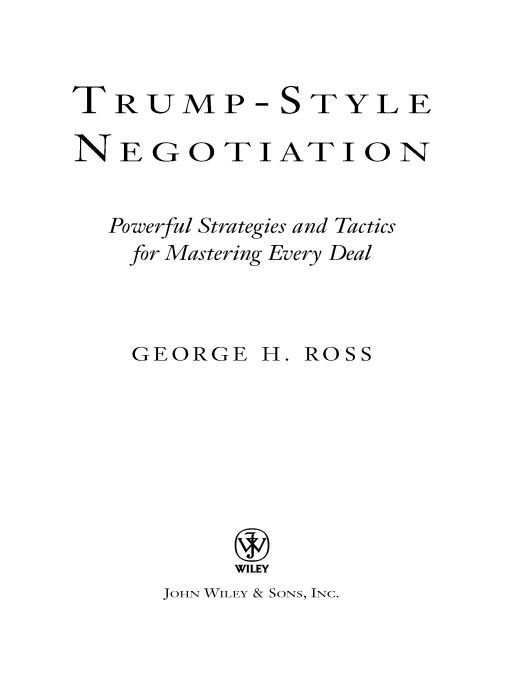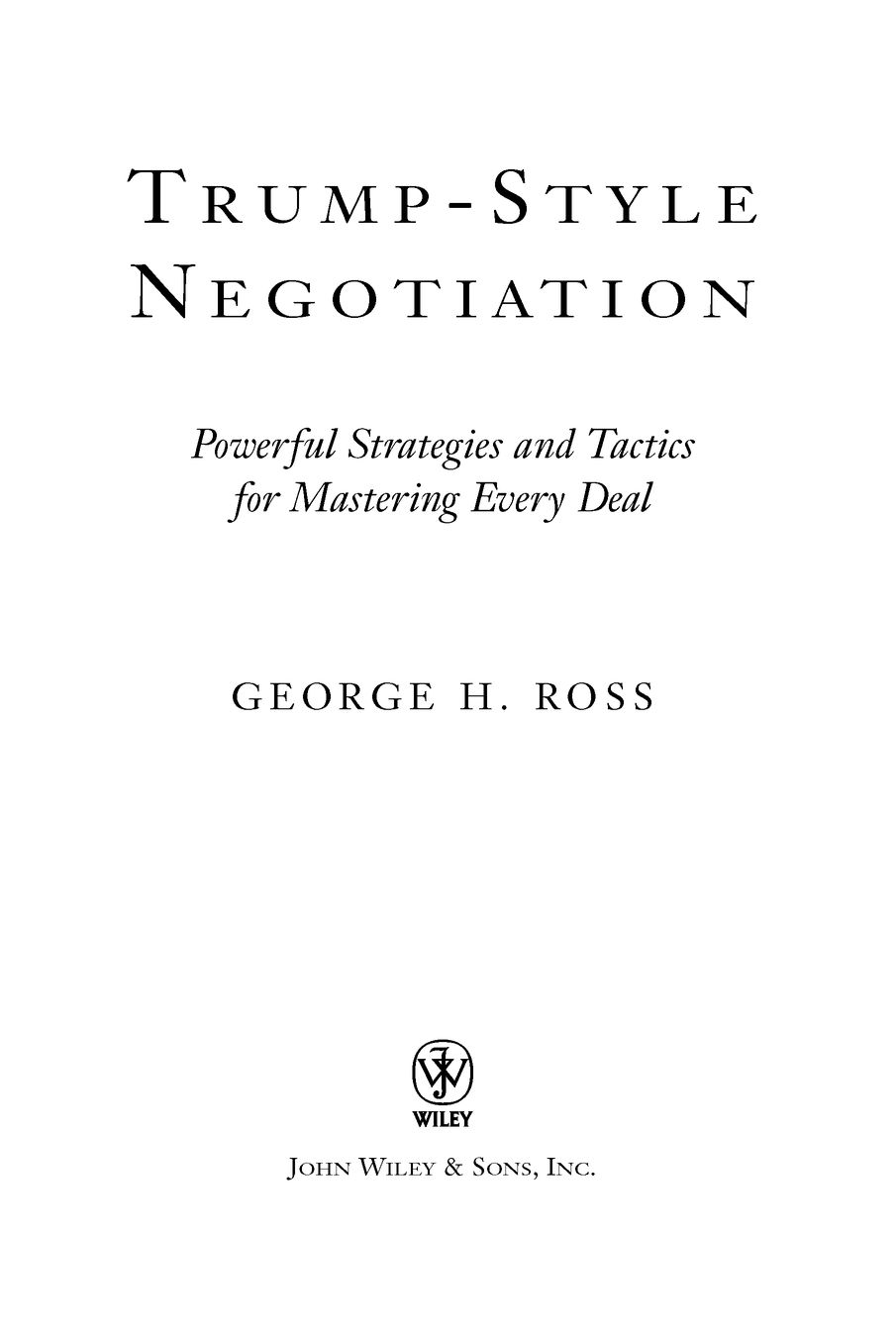Table of Contents
To my wonderful wife Billie
who has always been and
will always be the wind beneath my wings.
FOREWORD
THE FIRST TIME I met George Ross was in the 1970s. I was 27 years old and I was involved with my very first real estate foray, my adventure into Manhattan.
At the time, George was the senior partner in a major New York law firm dealing in real estate. George immediately understood the complexities of the deal I was trying to negotiate. This impressed me because no one had ever done that type of deal before. I had to negotiate major concessions from many different parties to make it work.
It was a complicated hotel deala bankrupt railroad-owned property next to Grand Central Terminal in New York, that I ended up turning into the Grand Hyatt. I had to work with a railroad, the city of New York, and the state government and the banks and a large number of other partiesnone of whom thought it would work. George had no direct experience in some of these areas but even so, he seemed to know exactly how to put the whole thing together to match my vision. I needed the deal to specify that I would pay no property taxes or rent (except a share of the profits). At that time in the 1970s, however, the city was approaching bankruptcyforeclosures were rampantso to create and operate a first class hotel from a building that was totally decrepit was a challenge, to say the least. In fact, the whole thing took two years of constant negotiations to put together. Without Georges negotiating expertise, the deal would have failed many times over. Instead, it was so successful it launched my career.
I like to think of myself as a maverick, someone whos willing to do something that no one else is willing to do. But as I learned during that two years, having a vision isnt enough; you also need an expert advisorsomeone who understands your ideas well enough to carry them forward, but who is also shrewd enough to negotiate on your behalf. George is a top real estate lawyer but more important (and this is unusual for a lawyer), he is also a shrewd businessman and negotiator. That combination was the key.
I like to work in broad strokes, deal with the big picture, but not the details. For the details, I rely almost entirely on George. He is able to put my vision into concrete terms, but he is also a natural at judging how any given negotiation needs to proceed; what the other side wants and needs; and how to get results. You are very fortunate to have this book and to be getting the same negotiation wisdom for which I paid George extremely well!
DONALD J. TRUMP
INTRODUCTION
How I Became Donald Trumps Negotiator
OVER THE PAST 30 years of working with Donald Trump, Ive come to learn the key element in his business style: He is a genius at establishing a relationship with the other party. He understands the human element. My role has been to negotiate the transaction; thats my strength. Its Trumps vision, but I handle the details. This has worked well for us.
Although co-starring on The Apprentice is what I am now best known for, for many years I have worked with Donald, as advisor, negotiator, and attorney. I have watched him in action as he structured and completed major transactions, and I helped him negotiate many of the biggest real estate deals imaginable, including Trump Tower, the GM Building, the Grand Hyatt, and 40 Wall Street. As you might imagine, I gained a great deal of negotiating experience during this time. This came on top of my previous 30 years of experience negotiating major real estate deals, including the Chrysler Building and the St. Regis Hotel, for other developers.
Donald and I have worked out a fairly simple way of taking care of business. Once he realized, during our first collaborative real estate effort, that I would always finish my part of his deal, he let me handle another one. The way we work is that if and when I need him to intervene (usually when his personal relationship skills can be used to convince someone that he or she ought to go along with what we have in mind), he steps in. Otherwise, Donald gives me the freedom to handle the deal as I see fit, which places me in a unique position. I am able to do the legal work and the business negotiation at the same time. This is very unusual for any lawyer unless he also has considerable direct business experience, which most lawyers do not. Weve use this efficient approach consistently, even when we have help from outside attorneys, which is often.
WHAT IS TRUMP-STYLE NEGOTIATION?
In this book, I am going to share with you many of the negotiating tactics and methods that Ive developed over my 50 years of negotiating experience. I call these the Trump style of negotiation because they involve many of Trumps strategies. But I have also included many great lessons I learned from other New York real estate moguls I representedor sat across the table from. These strategies work for many kinds of dealsbuying a car, getting a raise from your boss, buying or selling a small investment property, or financing a skyscraper.
A big part of Trumps style involves playing up your strengths and delegating your weak points. He has an amazingly organized mind and he can solve problems, even complex ones, with remarkably creative solutions most other people wouldnt think of. He also understands how to figure out what the other side needs and wants, and he can see his way to the end result. So his vision and organization are the keys to his success. At the same time, he is not a detail-oriented person. He doesnt want to spend three days reading a lengthy lease one paragraph at a time. This is where I come into the picture. Trump-style negotiation involves the specific strategies Im going to share with you. But you also have to know when to delegate and when to let experts step in and help you.
MY EDUCATION IN THE ART OF NEGOTIATION
In the first three years of my legal career, I became something of a technician and expert in real estate law. I became adept at drafting contracts and all sorts of other documents. One of the things well talk about in this book is the great advantage of having all of the forms and legal documents in hand before you go into a negotiation, even if you have to draft them yourself. The existence of a form or contract makes it the official versioneven when there isnt any such thing. Preparing any document in a negotiation gives you a great psychological edge because it is more difficult for the other side to propose a change once the form exists.
Before joining Trump, I was working as a real estate lawyer and having a lot of success. Finally, I went to my boss and said I wanted to be made a partner in the firm. He told me, We dont make partners. So I left (but on good terms). From 1956 to 1966, I worked for Sol Goldman and Alex DiLorenzo Jr., who were becoming the biggest real estate investors in New York City, and I arranged for the purchase of 702 properties for these clients. That is more than one per week, each week, over a 10-year period. When you do that many deals, you learn just about every negotiation trick in the book, and you learn to predict how people are likely to react in every imaginable negotiating situation.
I had wide latitude for changing the terms of any deal. I was very young when I started, and I soon realized I was leaving a lot of my bosss money on the table. So, I began to carefully study the tactics of the other side in these deals, and I became very adept at negotiating.



